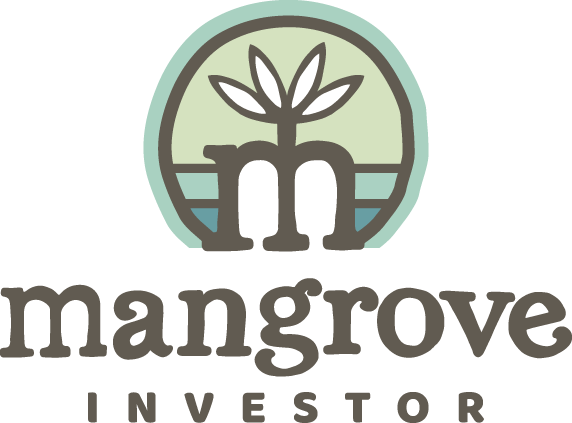

Warby Parker: An Eyeglass Company With ‘For-the-Good’ Vision
My world started to blur when I was nine years old.
At first, the hard white lines of my teacher’s handwriting warped against the black elementary-school chalkboard. But if I leaned forward an inch or two, the letters would jump back into focus enough that I could continue taking my notes.
No harm, no foul or so I thought.
Except that a couple of months later, I started to get headaches watching TV at night. Again, I made a small adjustment and tried to watch my favorite shows and movies during the day.
But by the time I turned 10, I couldn’t read the clock that sat on my bedside table when I woke up in the middle of the night. And I finally had to admit to both myself and my parents that there was something seriously off with my vision.
After a trip to the eye doctor, my worst fears were finally confirmed: I would need to get glasses right as I was entering the most awkward phase of my adolescence.
To make matters worse, my parents didn’t believe in spending $400 for a pair of designer frames. So, I got to pick my glasses from the discount section of the store, where all things cool and trendy went to die.
Leaving the optometrist’s office with my new glasses, it felt like all the Gucci and Prada models on the walls were mocking me.
My situation didn’t improve much until I got to high school, when a friend told me about a new Philadelphia-based company called Warby Parker that was changing the game for glasses-wearers.
Warby Parker’s business model was simple.
I could choose five pairs of glasses from the company’s website, which it would ship to me for free. Upon arrival, I had five days to try out each pair of frames in the comfort of my own home before sending them back with a pre-paid shipping label.
Afterward, I’d simply upload my lens prescription to Warby Parker’s website and order the pair of frames I liked the most from my home try-on order. Alternatively, I could request five new glasses to try or take my business to another retailer.
As an introvert who dreads brick-and-mortar shopping, I was immediately appealed by Warby Parker’s model .
Yet, the glasses themselves were the best part. They had the look and feel of designer frames. But at $95, they cost a fourth of the price.
Not only did I end up buying a pair of glasses after my first try-on, but I’ve since bought five more frames from Warby Parker over the past 10 years.
Here’s why.
For one, Warby Parker has remained an independently owned company since its initial startup days. And that means it has exclusive control over its pricing.
Most optical companies, including popular names like Ray-Ban, Sunglass Hut, and Pearle Vision are controlled by the Italian French eyewear giant Essilor Luxottica.
Luxottica is an Italian eyewear company that was founded in 1961. It owns the licensing rights to many designers’ eyewear brands such as Prada, Chanel, Coach, Versace, and Michael Kors.
In 2018, Luxottica joined forces with French brand Essilor, which has been around since the 1800s and owns some 250-plus vision companies.
In other words, if you own a pair of glasses, there’s a good chance they can be traced back to Essilor Luxottica.
Now, Essilor Luxottica’s market cap is roughly €41.4 billion, which makes it one of the biggest publicly traded companies in Europe. It’s also one of the largest optical corporations in the world, meaning it sets the industry’s pricing from manufacturing on down.
That’s why a pair of Ray-Bans that costs $20 to make costs you hundreds of dollars to buy. Warby Parker’s pricing, on the other hand, is a little more reasonable.
Now, don’t get me wrong, Warby Parker still needs to turn a profit, so the prices of its glasses are still marked up.
But its direct-to-consumer business model means there’s no middleman to deal with, which automatically saves you money. And more than a decade later, the company’s base pairs of prescription frames still only cost $95.
But here’s what I really like about Warby Parker.
For as long as I’ve known this company, it’s participated in a program called “Buy a Pair, Give a Pair.” And it does exactly what it describes.
For every pair of glasses purchased, Warby Parker donates a pair of prescription frames to someone less fortunate.
According to the company’s website, 2.5 billion people around the world need glasses but don’t have access to them. And of that number, 624 million individuals can’t effectively learn or work because of their visual impairment.
Think about that for a second.
Imagine not being able to go to work because you can’t safely drive a car without visual aids. Or imagine falling behind in the classroom because you can’t read your teacher’s writing.
As I sit here typing this article, I’m reminded of how incredibly lucky I am to have full use of my sight and how quickly my life would change without it.
Now, in addition to its “Buy a Pair, Give a Pair” program, Warby Parker also works with a number of organizations and government agencies to provide free vision screenings, eye exams, and glasses to school-age children in the U.S.
In 2020, the company also used a portion of its sales to buy personal protective equipment for health care workers battling the coronavirus.
All told, Warby Parker has donated over 8 million pairs of glasses to people in need in 50-plus countries. But it’s only just getting started.
In the 11 years since its launch, Warby Parker has gone from a no-name startup to a company valued at roughly $3 billion.
While it’s still a private enterprise, initial public offering (IPO) rumors have been circulating since 2018, and many believe a public offering is all but inevitable.
As a customer of Warby Parker’s from the very beginning, I’ll be keeping a close eye on this company over the next couple of years. Should it finally IPO, I believe it would make for a good entry into the $147 billion global optical market.
Not only is Warby Parker an underdog compared to industry titan Essilor Luxottica but I also feel better supporting a company doing its part to give back.
Until next time, keep investing for the good.
Jennifer Junggust
Contributing Writer
(Editor’s note: Warby Parker went public in September of 2021, and trades on the NYSE under the ticker WRBY.)


